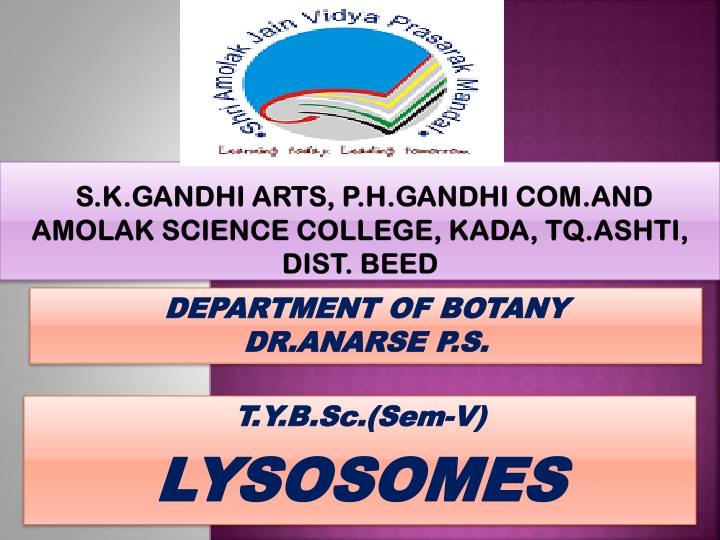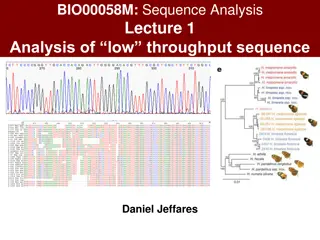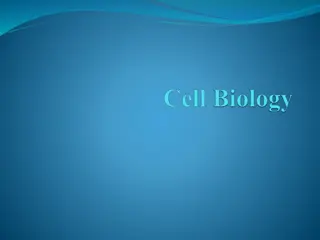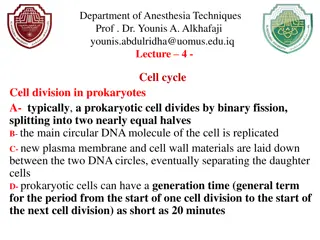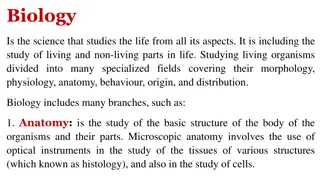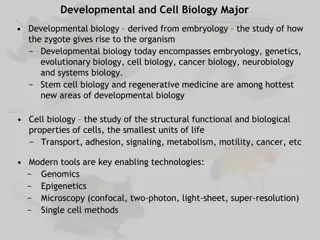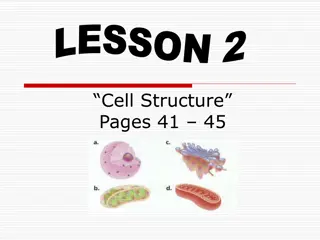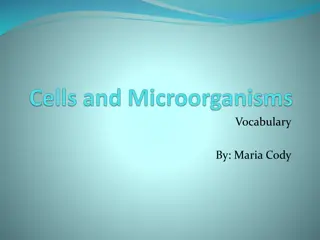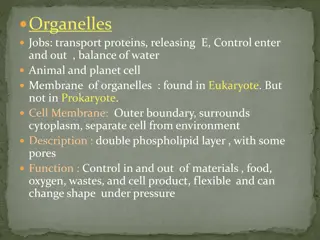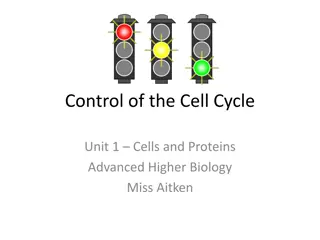Discovering Lysosomes in Cell Biology
Lysosomes are membrane-bound structures containing enzymes for cellular digestion, with diverse shapes and roles in animal cells. Explore their structure, occurrence, and functions in intracellular breakdown processes.
Download Presentation

Please find below an Image/Link to download the presentation.
The content on the website is provided AS IS for your information and personal use only. It may not be sold, licensed, or shared on other websites without obtaining consent from the author.If you encounter any issues during the download, it is possible that the publisher has removed the file from their server.
You are allowed to download the files provided on this website for personal or commercial use, subject to the condition that they are used lawfully. All files are the property of their respective owners.
The content on the website is provided AS IS for your information and personal use only. It may not be sold, licensed, or shared on other websites without obtaining consent from the author.
E N D
Presentation Transcript
S.K.GANDHI S.K.GANDHI ARTS, AMOLAK AMOLAK SCIENCE COLLEGE, SCIENCE COLLEGE, KADA ARTS, P.H.GANDHI P.H.GANDHI COM.AND KADA, , TQ.ASHTI DIST. DIST. BEED BEED COM.AND TQ.ASHTI, , DEPARTMENT OF BOTANY DEPARTMENT OF BOTANY DR.ANARSE P.S. DR.ANARSE P.S. T.Y.B.Sc T.Y.B.Sc.( .(Sem LYSOSOMES Sem- -V) V) LYSOSOMES
LYSOSOMES Lysosomes represent a new discovery among the cytoplasmic particles. They were first described by deDuve in 1955. Duve termed these organelles as lysosomes because they were found to contain enzymes capable of causing lysis or breakdown. The lysosomes usually formed from Golgi complex. Lysosomes are membrane bound dense granular structures containing hydrolytic enzymes responsible mainly for intracellular & extracellular digestion. The word Lysosome is made up of two words lysis meaning breakdown & Soma meaning body. It is an important cell organelle responsible for the inter& extra cellular breakdown of substances.
Occurrence: They are more commonly found in animal cells while only in some lower plant groups. Lysosomes occur freely in the cytoplasm. In animals found in all cells except in the RBCs. They are found in most abundant numbers in cells related to enzymatic reactions. Such as liver cells, pancreatic cells, kidney cells, spleen cells, leucocytes, macrophages.
Lysosomes are essentially small membrane bound vesicles containing hydrolytic enzymes isolated from rest of the cytoplasm. Unlike other organelles it is bound only by a single unit membrane made up of lipoprotein. They are highly polymorphic i.e. of different shapes & heterogeneous i.e. of different origin & thus vary in their size & structure. They are usually spherical, measuring 0.2 to 0.8 microns. They are mostly globular or granular in appearance. The membrane contains highly glycosylated lysosomes associated membrane proteins (LAMP) & lysosomal integral membrane proteins (LIMP). LAMPs & LIMPs form a coat on the inner surface of the membrane. They protect the membrane from attack by the numerous hydrolytic enzymes retained inside.
Lysosomes have been found to contain molecules of a number of hydrolytic enzymes stored in crystalline or semi crystalline forms. The single unit membrane is impervious to these enzymes & also resists their action. The membrane usually ruptures during oxygen deficiency & on exposure to poisonous substances. In case the membrane breaks, the enzymes released are capable of destroying the cells. For the reasons lysosomes are known as suicide bags of cells.
Types of Lysosomes: Primary Lysosomes: Small sac like structures enclosing enzymes synthesized by the rough ER. They are directly formed from Golgi complex or granular E. R. by budding & contain only hydrolytic enzymes. Secondary lysosomes:They are formed by fusions of primary lysosomes with phagosomes i.e. the vacuoles ingesting foreign particles. In secondary lysosomes ingested particles are digested. Residual Bodies: These are the lysosomes containing weak digestive enzymes &residual or undigested particles. They travel towards the periphery & egests undigested particles by breaking the cell membrane. Autophagosomes: These are the lysosomes engaged in the digestion of damaged organelles of cell.
Functions of lysosomes Intracellular digestion: They digest the food particles or any foreign body like bacteria & toxic substances, entering the cells. Extracellular digestion: Sometimes the digestion takes place outside the cell body by giving out hydrolytic enzymes in the surrounding media. Role in Fertilization : During fertilization they help in penetration of sperm into the egg by dissolving the egg membrane.
Role in Metamorphosis: During Metamorphosis of insects & amphibians, the unwanted tissue of gills & tail are digested by lysosomes which are then utilized by rest of the body. Autolysis: Lysosomes brings about the destruction or digestion of dead cells, a property for removing cell debris. Hormone secretion: There is evidence that lysosomal hydrolases are involved in the secretory activity of some cell.
